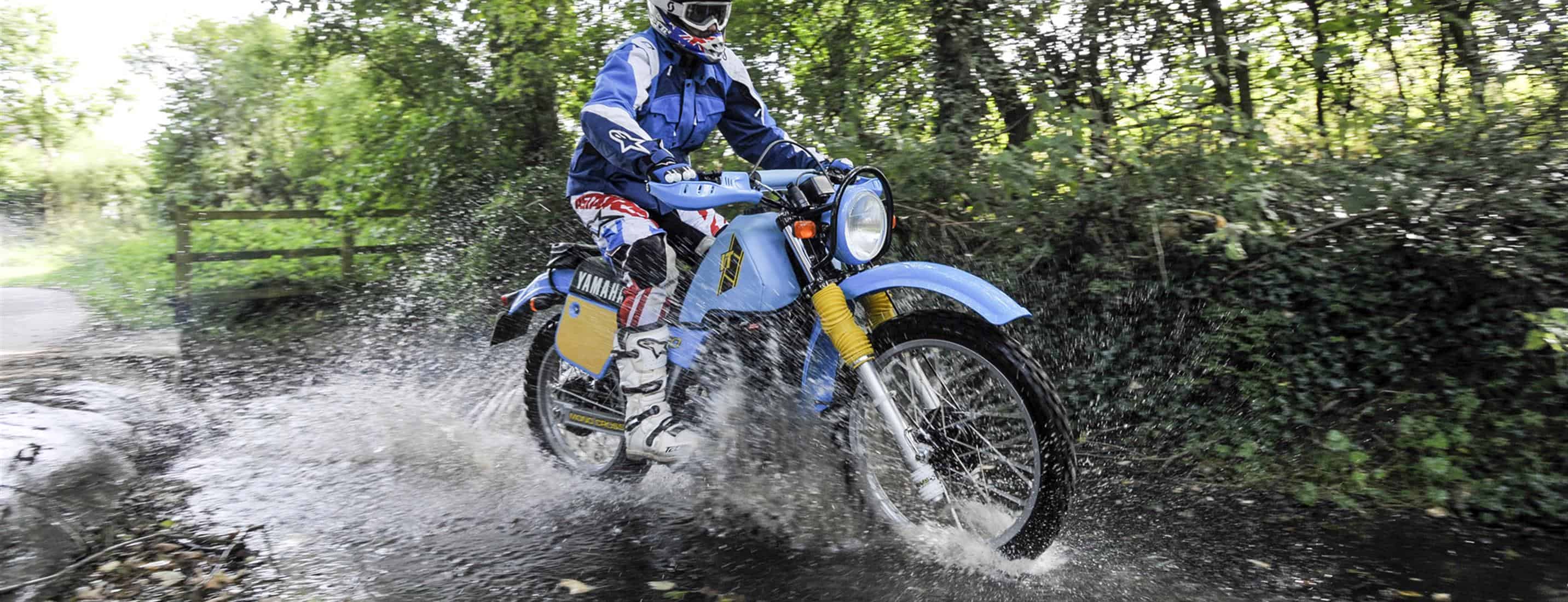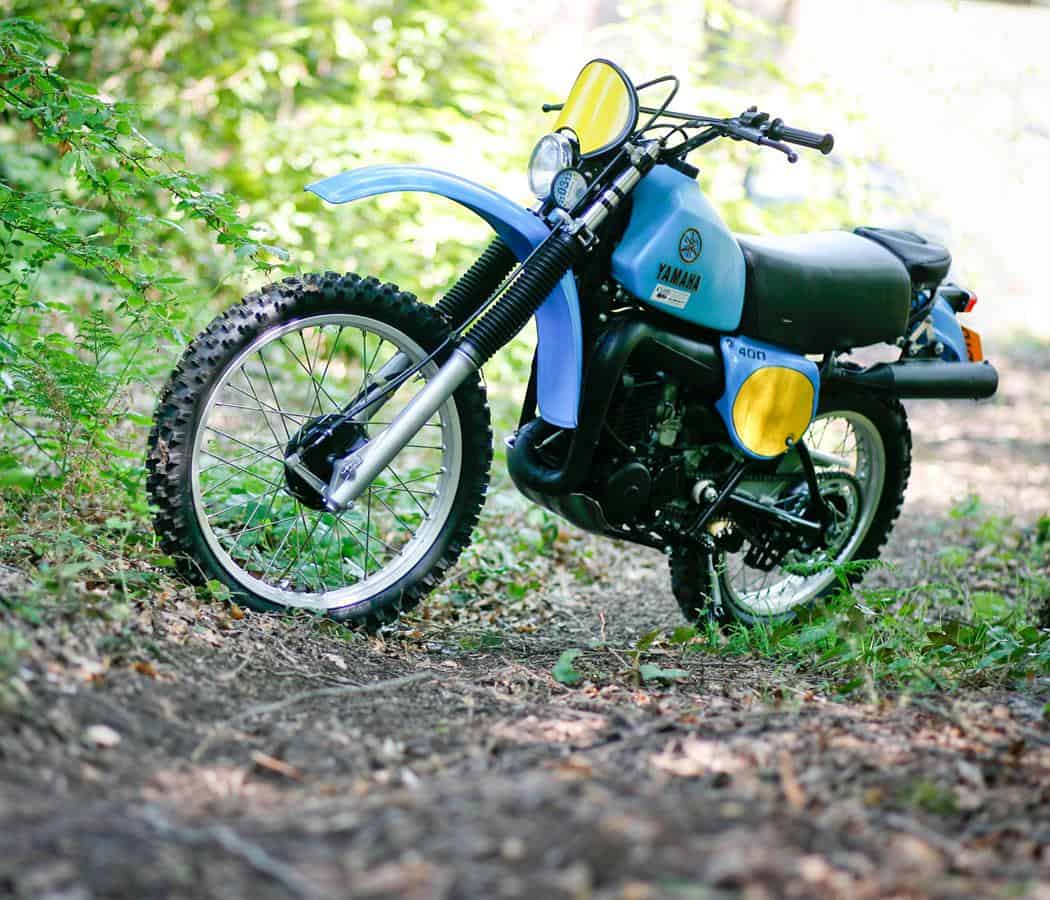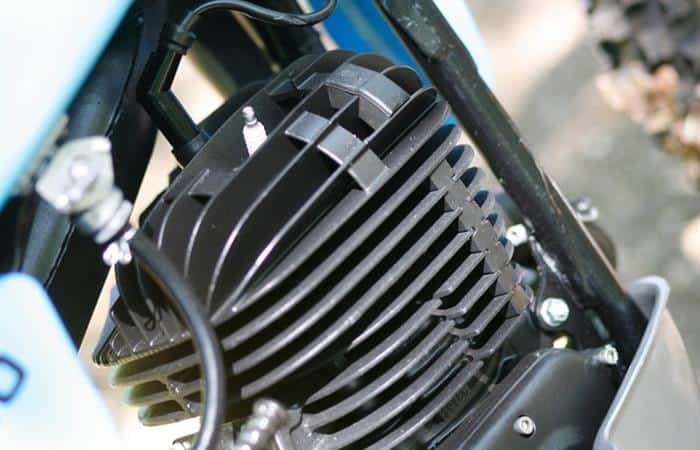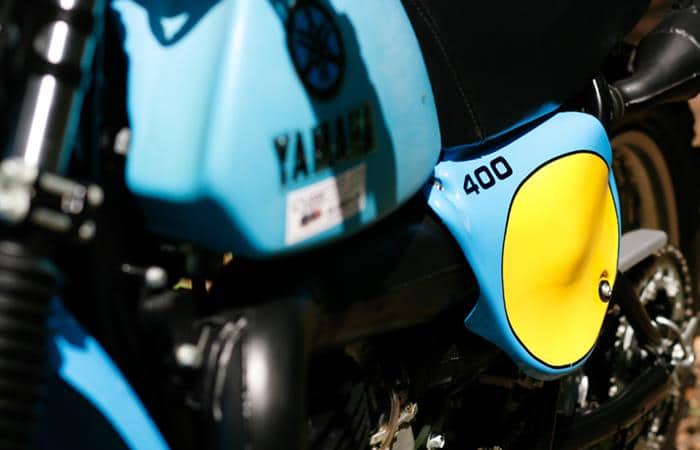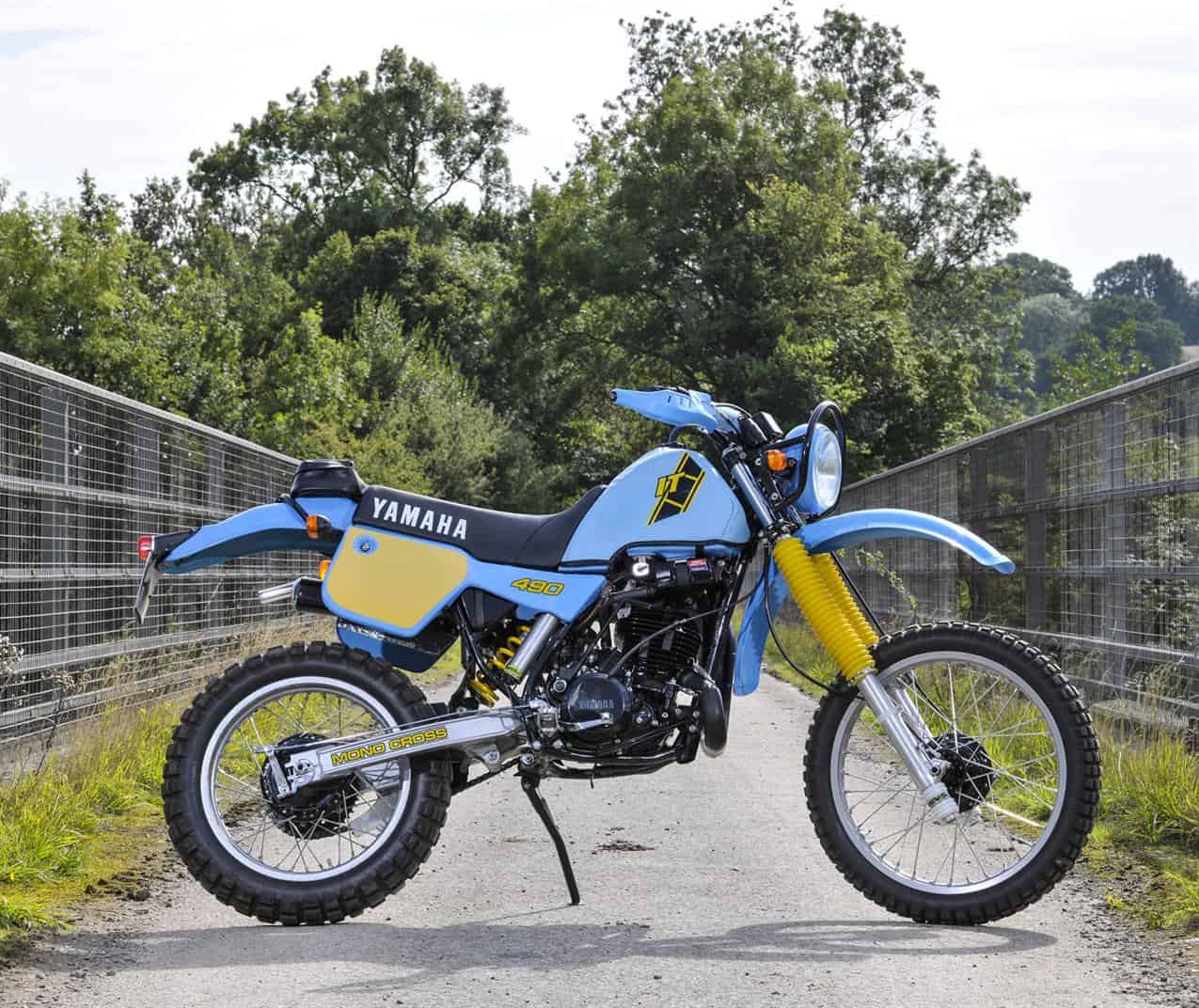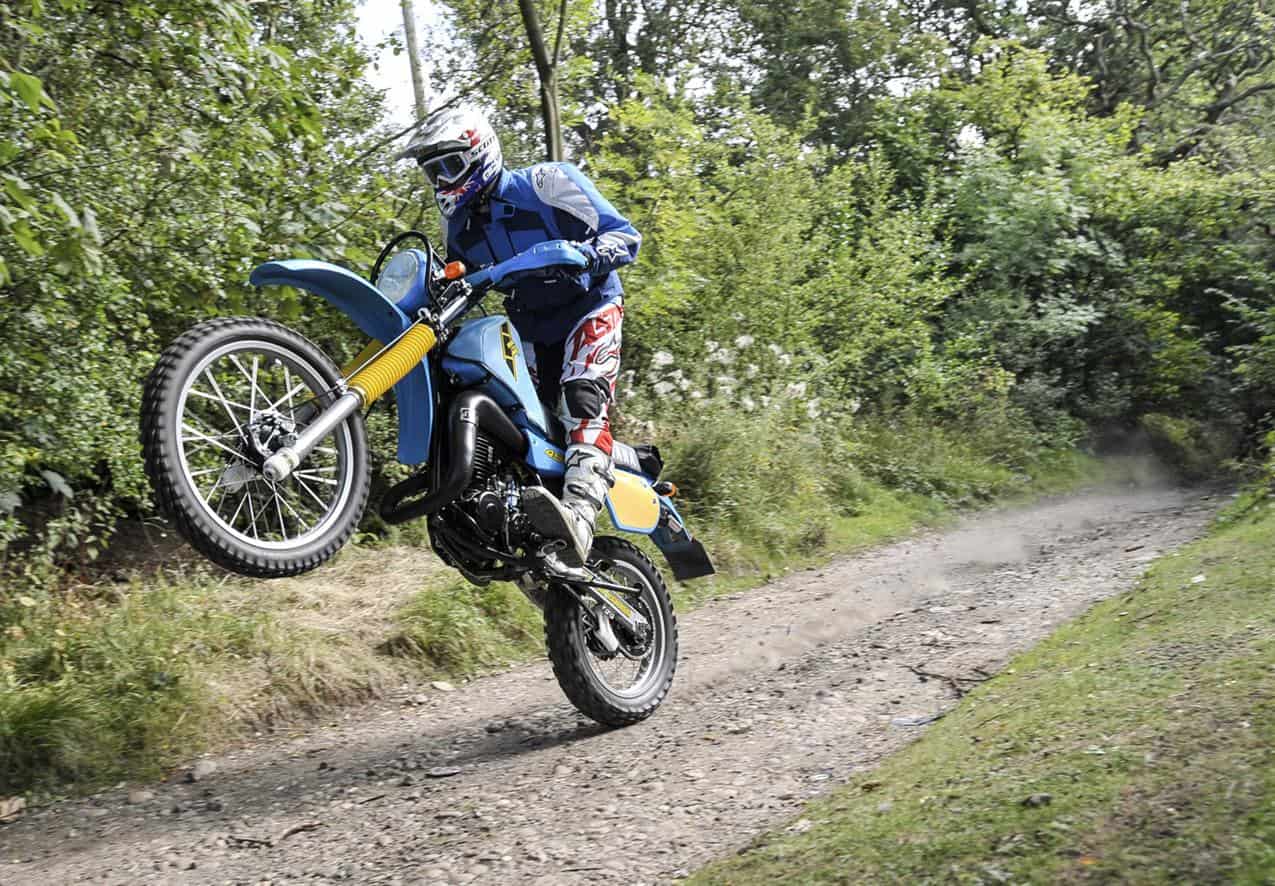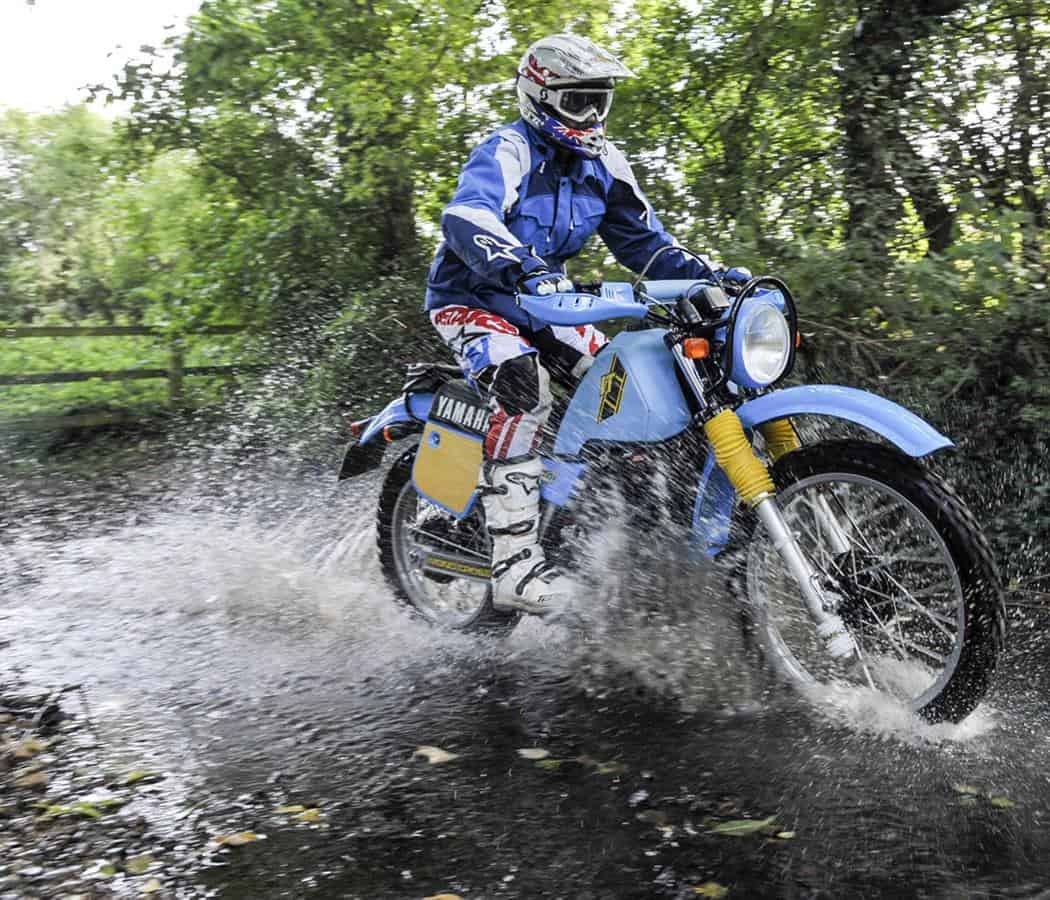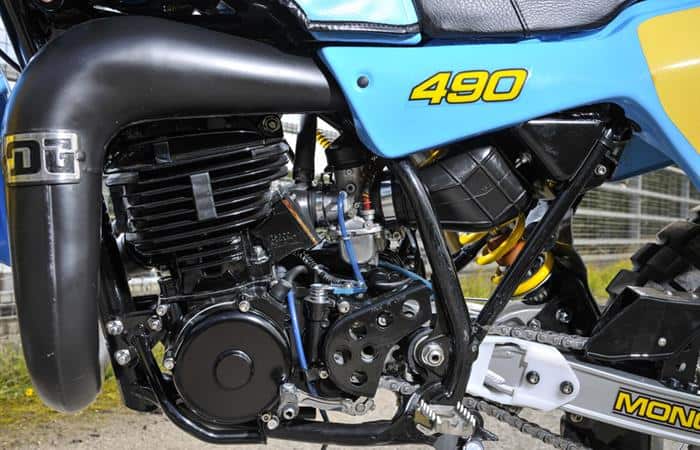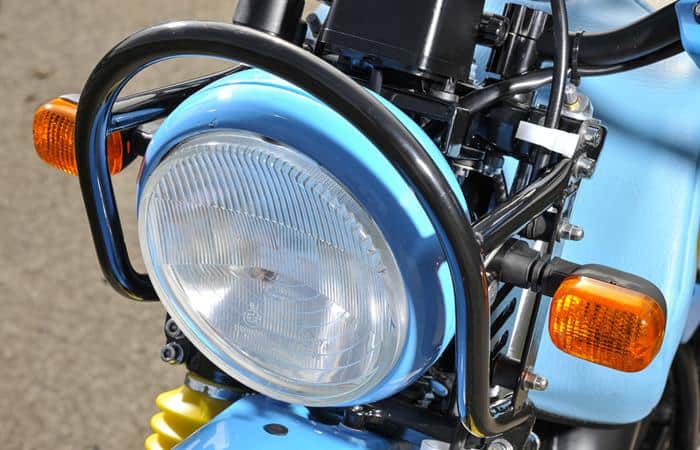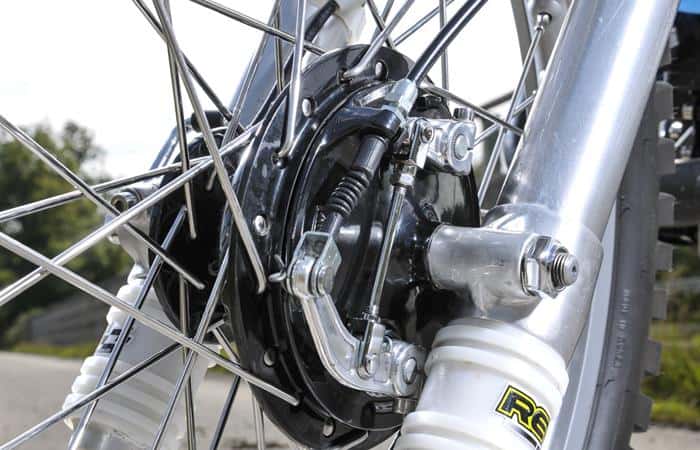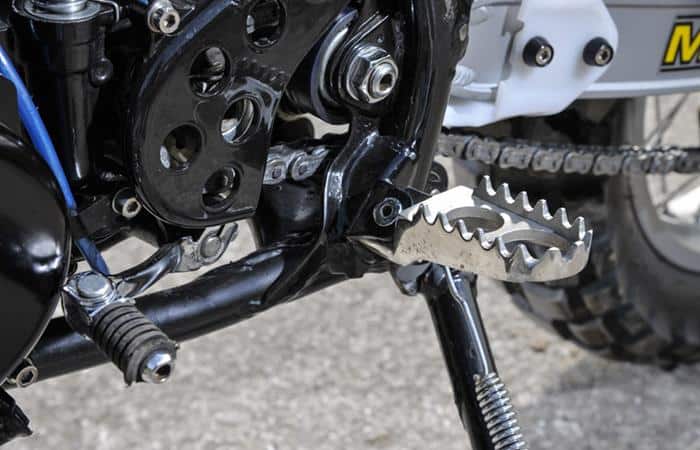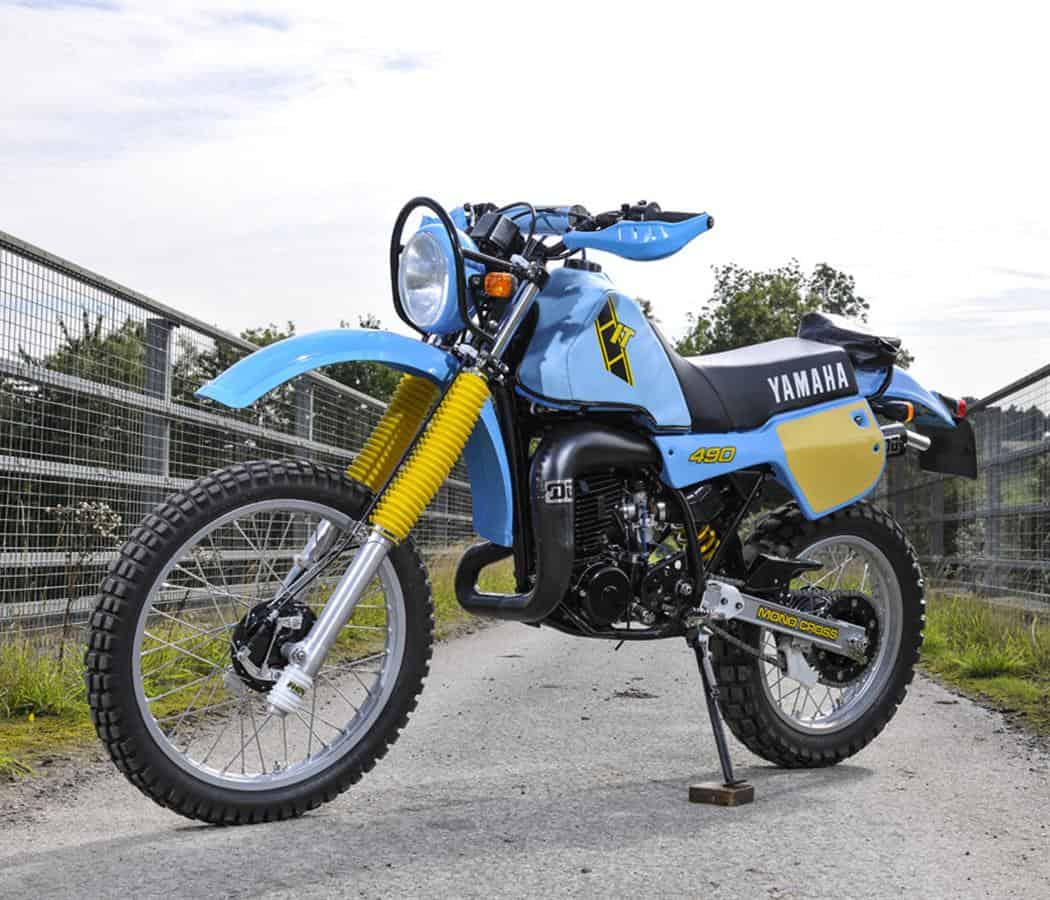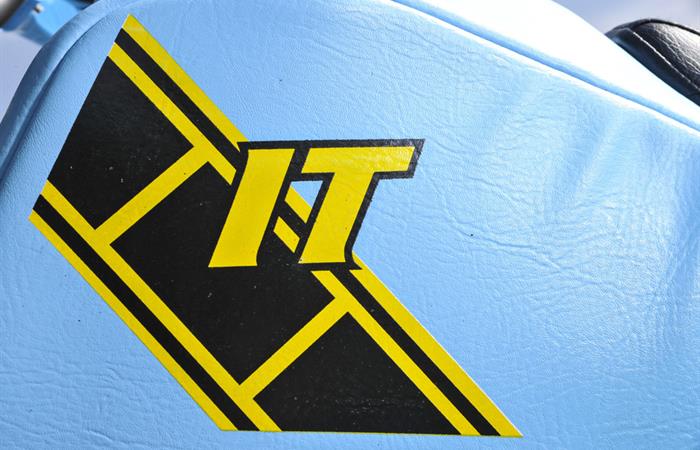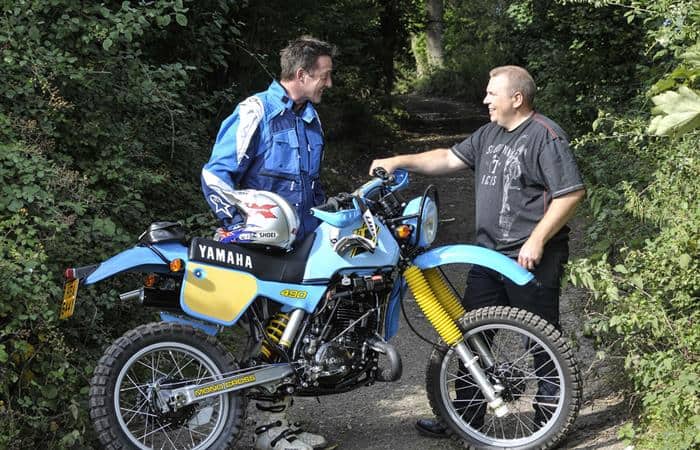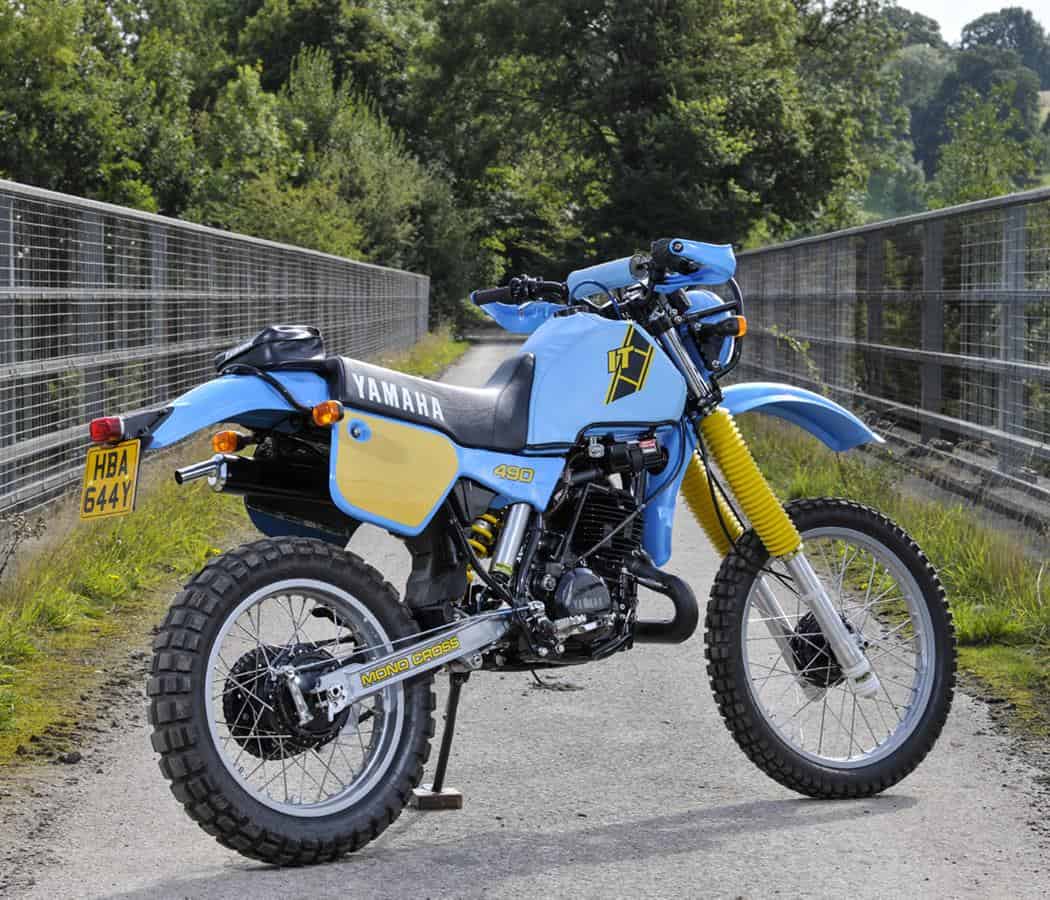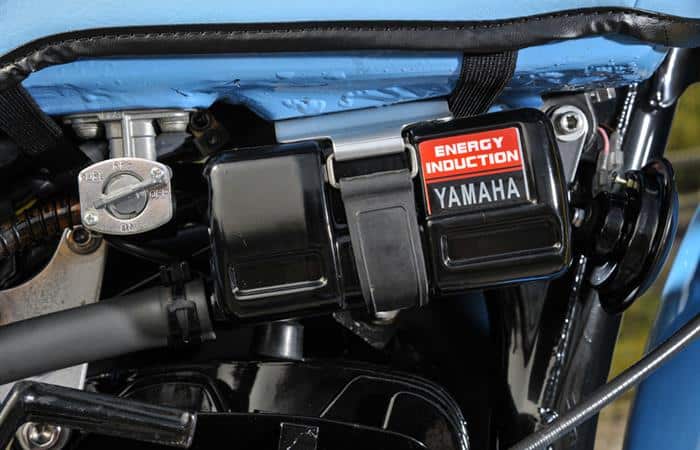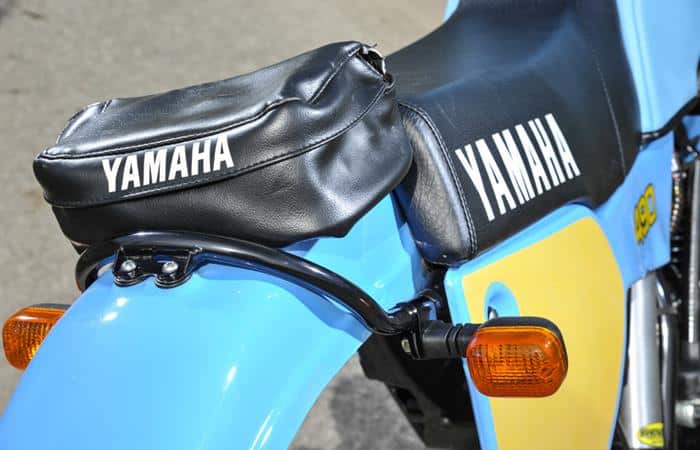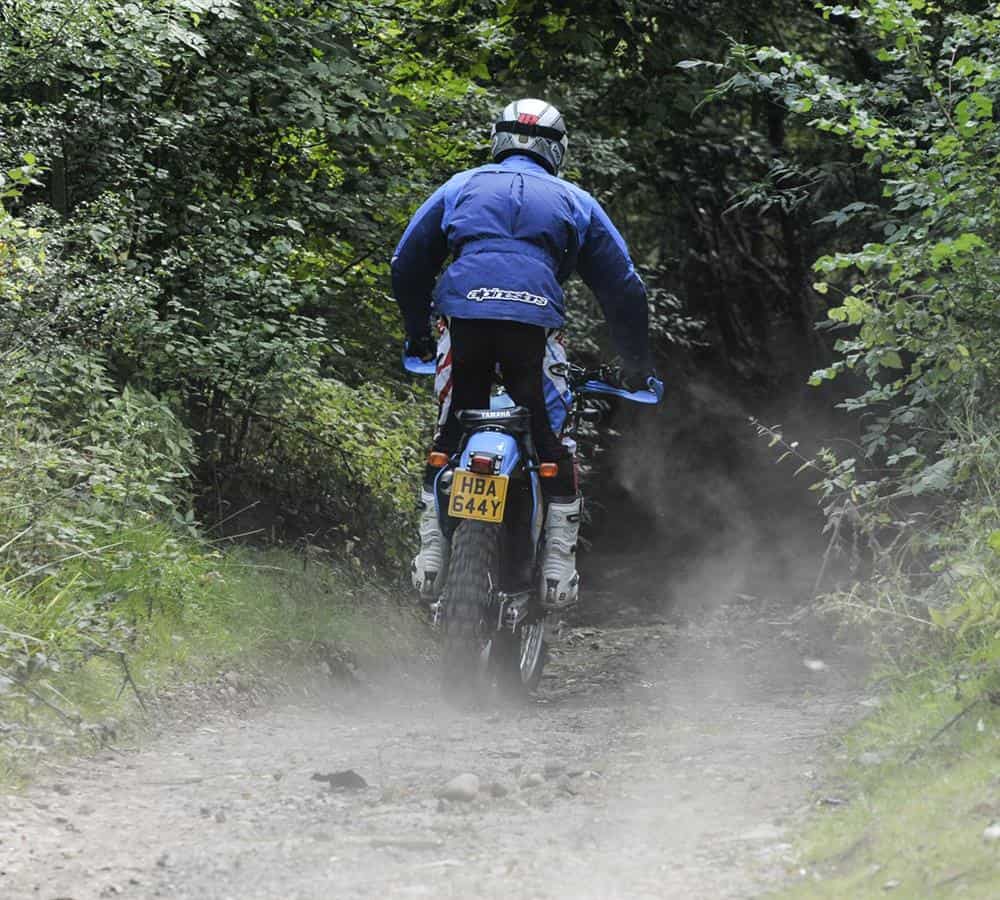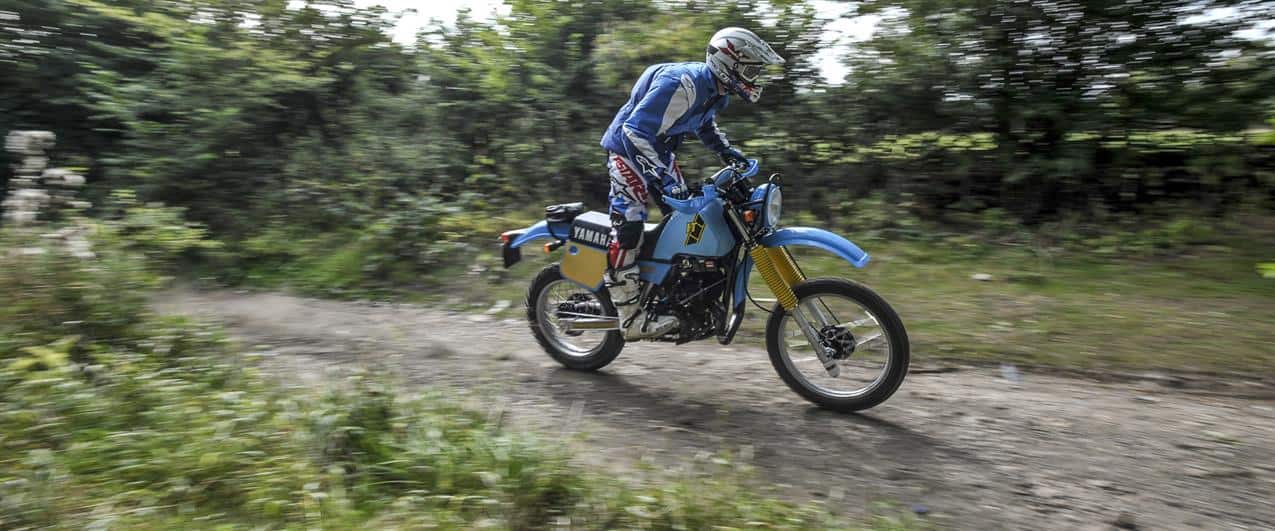2016 marked the 40th anniversary of Yamaha’s first dedicated enduro bike, the IT400C. Cause for celebration we thought. An excuse too, to jump on one their most (in)famous models – the mighty IT490…
Here at RUST we want to see a Yamaha win an enduro world title this year – for sentimental reasons. Given 40 years of patronage to this wonderful sport that we love, we think there’d be no better way to celebrate than to see the blue team snare another world crown – so, no pressure there for Jamie McCanney and the other blue riders!
It was back in 1976 that Yamaha came into enduro for the first time in a serious way. Technically speaking they were already involved for such had been the success, and capability, of their DT-1 trail bike of 1968, that from that date on many off-road enthusiasts had already been adapting Yamaha’s trail machines to serious competitive use.
But Yamaha’s first real enduro came in 1976, with the IT400C. The IT (said to stand for International Trial, after the ISDT – which didn’t become the ISDE until 1981) was clearly aimed at the American market. It was based remarkably tightly on their successful YZ400 motocrosser, featuring the same frame, motor, carb, pipe and shock. Given that the YZ had been a revelation in American motocross (something of a powerhouse), this meant the IT had instant credibility. The IT differed by way of the addition of a TY (trials bike) lighting kit, a much bigger 12-litre (plastic) fuel tank, longer off-road specific forks and a narrower rear tyre. Oh, and a bash plate, mini-odometer, spark arrestor and other enduro necessities.
The bike pictured below is the slightly later IT400D
The IT wasn’t exactly a revelation, though. It was high-geared, which didn’t suit woods work so well, but with a torquey and so-powerful motor it could cut a cool 80mph streak across a desert. Which pleased most riders in the Western States. And it was considered quite heavy at 113kg (conversely considered a competitive weight for an open classer today: a 2016 KTM 450EXC weighs 112kg – now there’s 35 years of progress for you!) and with the front end raked out at a mellow 31.5º (said 450EXC has a steering angle of 26.5º) again it wasn’t what you would call a woods weapon, exactly. The European enduros, like the Husky WR360 and Maico 400GS, were easily superior. But the Yamaha had two very typically Japanese qualities of the era: low cost and ease of use. Dirt Bike magazine in America called it the ‘ultimate Joe Average big-bore trail bike’.
The Japanese offering was, nonetheless, very nearly good enough. It was very attractive, looked to have all the right bits (Yamaha were always quick to adopt the enduro-specific mods, like QD head-light, snail-cam chain adjusters and pullers on the axles), and it came at the right price – about a third less than the price of the European exotica. But there again, the IT never quite aced the European thoroughbreds in direct competition. Features that made ITs attractive to amateur riders – easy power, soft suspension and easy maintenance – meant they lacked the no-compromise race set-up needed to win at the highest level. That didn’t stop Yamaha working hard to improve. Back in the 1970s Yamaha still maintained a Competition Support Department in the US and these guys would feverishly work on annual improvements, whereas today most Japanese enduros are lucky to see a refresh once every decade. We should add Yamaha won the sales war, though – Japan Inc could always be relied upon to build the numbers to meet demand.
Over the following years the IT improved and a full range developed, so that by their peak in 1983 you could chose from a 125, 175, 250 and a mighty 490 (bike of legend). The peak was, alas, followed by a cliff – within two years the range was cut down to just one, the IT200, and that too was deleted by the end of 1986. There followed a hiatus before Yamaha returned again, first with two-stroke WRs then the start of the modern WR-Fs at the very end of century.
THE IT490
Anyway, back to 1983 where this IT490K comes in. It represents the high water mark of the IT range. The most powerful IT with the best suspension – featuring linkage monocross rear suspension, a serious upgrade on the cantilever of the year before.
Being closely related to the YZ490 motocrosser it was awarded the reputation of being quite the beast, but actually, being retuned for enduro, the peak horsepower was around 35hp, a number far exceeded by today’s 450s. Of course in 1983 there wasn’t the kind of digital engine management modern bikes benefit from, so yes, it was still quite lairy, but the YZ was the real monster. In fact, our recent test of the 2016 WR250 two-stroke put us in mind of the IT490, for in both cases Yamaha lowered the compression ratio and lowered the exhaust port to reduce the power and create the more torquey mid-rangey kind of power needed for enduro.
The IT490 was only marginally lighter than the IT400C, measured back in the day at about 112kg, but of course the 43mm forks and monocross shock were much bigger units. The whole bike was much bigger, taller in fact, with 12-inches of travel front and rear. The bike was slightly let down by its suspension for the forks lacked any external adjusters while the shock, although of the newest linkage type, had only preload and rebound damping adjustment. Many riders found it under-sprung as well and would substitute the stiffer YZ490 spring. Over time many substituted the entire YZ490 suspension package, front and rear, for serious competition use.
As was very often the case back in the 1980s, the exhaust system was fairly restrictive, and so – as with our test bike here – it was common to substitute an entire aftermarket system, such as the DG system seen here.
RIDING THE IT490
So what was an IT490 like to ride? Well, given that we recently stumbled upon a complete nut and bolt restoration of an IT, by one Lee Workman and avide bikes builder and restorer here in the UK, we’ve had the opportunity to find out. (Lee: “I intended to make a supermoto out of it, but once I got to know the bike I didn’t have the heart to mess it up – so instead I have the meanest baddest trail bike in the area!”)
For a start the IT490 is stupendously – skyscraper – tall, the specifications suggest a 942mm seat height but it seems so much higher than modern bikes, perhaps it’s the width of the saddle that makes a difference for the seat on the IT is like a big old foam mattress, not the narrowed, sculpted polished mahogany plank of modern racers. So I’m stood with my left foot on the paddock stand while my right foot feels to be poised in the clouds, resting on the kickstart – I am of course adopting the position of kick-starting man (a visage fast fading into the history books).
I push down and it’s a swing of what feels like a good four-feet from top to bottom, but there’s no sense of compression at any point – and in fact for the last dozen kicks there’s been zero response from the engine. This kick doesn’t promise any different, but suddenly the motor doesn’t just catch, it explodes. The noise is instant and fantastic, it fills the air completely, three of us (me, Lee and Stuart the snapper) are stood barely two-feet from each other, but even shouted words are swallowed whole by the sheer ruckus of the IT. Words are superfluous in any case, instead we three share mile-wide smiles of insanity.
The noise is one thing – much of which comes from the engine itself, water-cooling obviously really silences a cylinder – the vibrations are another. I’m nosing my way gingerly – but of course massively noisily – down the alleyway from Lee’s garden and already I can barely feel my fingers given the intensity of vibration, of every frequency. I swear there are sparks of atmospheric discharge coming from the IT, for this thing is a giant blue ball of energy.
I started the ride on suburban roads and of course the IT is boisterous with it. It’s not happy on quarter throttle, it kind of pops, pings, bangs and crashes (never mind ‘hunts’) on a part throttle, then clears wonderfully once WFO. Big throttle openings create yet another wall of sound, not tearing-calico, more a Jack Nicholson-esqe spine-tingling scream of the manic, twisted type. Naturally, full-throttle induces the softly-sprung rear to squat by a good nine-inches, while the front correspondingly paws two-foot into the air…
The brakes are ridiculous, decorative you might say. The front adjusts the height of the fork, but little else, while the rear simply locks. Dragging my boots along the tarmac would have a greater effect, only I’m so high I can’t reach. Yet back in the day the twin-leading shoe front brake was considered one of the best. As Lee mentions, it could be his needs more fettling, albeit he’d been working from every scrap of advice he could get. Perhaps modern discs and twin-piston calipers simply make old drums feel so much worse than before we had such a comparison?
When we get to swap tarmac for dirt the IT finds its true habitat. And here it is glorious. Hand on heart, the IT experience is every bit as engaging as a ride on the latest Yamaha WR enduros (now four-stroke). In fact the IT is in many ways better. The long-soft suspension feels to deal with ruts better than modern set-ups and the big seat is of course much more comfortable. I dare say this set-up might not work on a cut-up modern enduro course, but on less-aggressive, less whooped-out trails I’m able to ride the IT on near full-throttle in some comfort. That word ‘comfort’ again? Like a padded cell.
By the way, Lee had fitted a set of modern handlebar clamps to his IT, where the standard clamps are raked backwards, which meant it was easier for me to adopt a near-modern standing riding position. With the bars more rear-set you’d be more naturally sitting with your weight rearward, and so for sure this thing must have wheelied all the time then – hence the reputation?
The power is as sumptuous as the seat. Peak power is at 6000rpm, so it all happens quite early, after the stutter from the carb as it struggles with small throttle openings, there’s a great oomph as the bottom-to-mid really takes a hold. It’s big power but doesn’t feel unmanageable. But being so big it gains speed so quickly you’re more inclined to short shift than to rev-it out – yeah, you need the desert to explore the top end. Which is incidentally where this example originated from, Californian desert to be more precise – and judging by the headlight there might have even been the odd bit of Baja racing in its competitive past.
The IT490 turned out to be a great ride. It’s a civil as a competition bike of its era and capacity could be and I can understand the affection clubmen riders of the period could feel for their ITs. It’s got fight, but it’s not totally mad and this exact bike, yeah I’d take it to a modern enduro, perhaps not a highly technical multi-lapper, but for an event like the Welsh Two Day – 150 miles single lap across hilly rolling terrain, with a bit of forestry – I think it would be a great ride. Only maybe with a front disc brake fitted, can I ask for that?
HERE’S TO THE NEXT 40
Hats off to Yamaha. They have over the years looked after us, ‘us’ being the happy amateurs. Looking back over the four decades, remembering the DTs, the ITs, the WRs and WR-Fs (not forgetting the XTs and TTs) they’ve created some seminal enduro models. We’re seeing so many of those being resurrected for vinduro play days now, and that’s cool to see. So yes, here’s to the next 40!
Thanks to: Lee Workman for the loan of his immaculate IT490 and to Chris Bunce for the IT400D
1983 YAMAHA IT490K
ENGINE
Type: Air-cooled, reed-valve, single cylinder two-stroke
Capacity: 487cc
Bore x stroke: 87 x 82mm
Compression ratio: 6.7:1
Ignition: CDI
Carburation: VM38SS Mikuni round slide carburettor
TRANSMISSION
Primary/final drive: Helical cut gear/chain
Clutch: Wet, multiplate
Gearbox: 5-speed
CHASSIS
Frame: Steel, single down tube, full cradle frame
Front suspension: 43mm leading axle telescopic fork, 300mm travel
Rear suspension: ‘Monocross’ box section aluminium swingarm, adjustable for preload and rebound damping, 300mm travel
Front brake: Cable actuated double leading shoe drum
Rear brake: Rod actuated single leading shoe drum
Front tyre: 3.00 x 21
Rear tyre: 4.50-18
DIMENSIONS
Dry weight: 114kg
Wheelbase: 1485mm
Seat height: 942mm
Fuel capacity: 13.6 litres
PERFORMANCE
Top speed: 100mph with the right gearing
Claimed power: NA (34.65bhp at 6000rpm tested)
Claimed torque: NA (30.64lb.ft at 5500rpm tested)
Price new: $2249 (US market)

